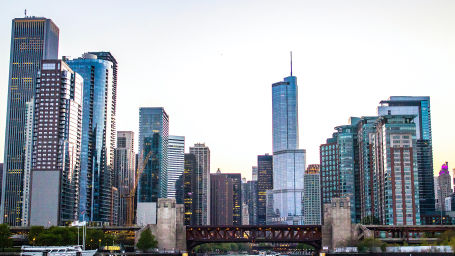

November 20, 2020 | Patti Zullo, Senior Director, Smart City Solutions, Spectrum Enterprise

How to use technology to improve public safety
There are many benefits to becoming a smart city. Using technology and advanced data analytics can help grow the economy, engage the community, improve operational efficiencies, and enhance the quality of life for its citizens, businesses, and tourists. As city leaders venture down the path to becoming a smarter city, many are discovering how the infrastructure they’re building to make their city more efficient can also be used to safeguard their citizens.
Below are three ways smart city technology can strengthen public safety today, and how it will evolve in the future.
Lighting the way
In many cities, streetlights illuminate city streets and sidewalks for better visibility at night. Streetlights serve another purpose beyond lighting the streets and sidewalks—they also represent a platform for deploying sensor technologies.
If the city owns the streetlamp infrastructure, government leaders can leverage their light posts as one way to create a built-in infrastructure for smart technologies. A light pole can be fitted with a wide array of sensors and devices to enable environmental monitoring provide space for digital signage and more.
Improving situational awareness
There are a variety of Internet of Things (IoT) sensors that can be installed to improve situational awareness and therefore enhance public safety and security. Installing sensor technology throughout the city is a way for city leaders to collect and analyze data so they can understand current conditions on the ground and react to those conditions in real-time. Using real data removes the guesswork and gives city operations the ability to respond quickly and efficiently.
For instance, image sensors can be installed to detect and capture activity, such as a traffic accident, and use that information to alert citizens and first responders what’s happening on the ground. Sound sensors, as another example, can recognize loud noises, such as thunder. Using these types of smart city sensors together in a system, city leaders can inform nearby citizens of an incoming storm so they can proactively take precautionary measures, or even evacuate if necessary.
Offering a different perspective
Another technology that can contribute to a safer city is drone monitoring. Drones offer the unique ability to access hard-to-reach places and provide a different perspective. A drone can fly over your water towers, or underneath your bridges, and capture previously inaccessible footage that would be useful for inspections and maintenance. Drones can also be used during search-and-rescue operations as they can reach treacherous terrain and crews don’t have to put themselves at risk to get to perilous places.
Similarly, deploying drones ahead of first responders can capture data in real-time and inform responders of the situation that lies in front of them so they can monitor rapidly evolving situations and be prepared to take action as soon as they arrive on scene.
Building a safer future, together
City leaders looking to implement smart city projects are inherently building the foundation for a safer city. A key element for a safer city is for leaders to work together with the larger community to ensure that the residents they’re looking to protect are comfortable with the approach. By partnering with private businesses, technology partners and citizens, city leaders can build smarter, safer cities today, and continue to meet the needs of their community in the future.
To learn more about smart city initiatives, contact us here.
Speak with a Spectrum Smart Cities Expert







